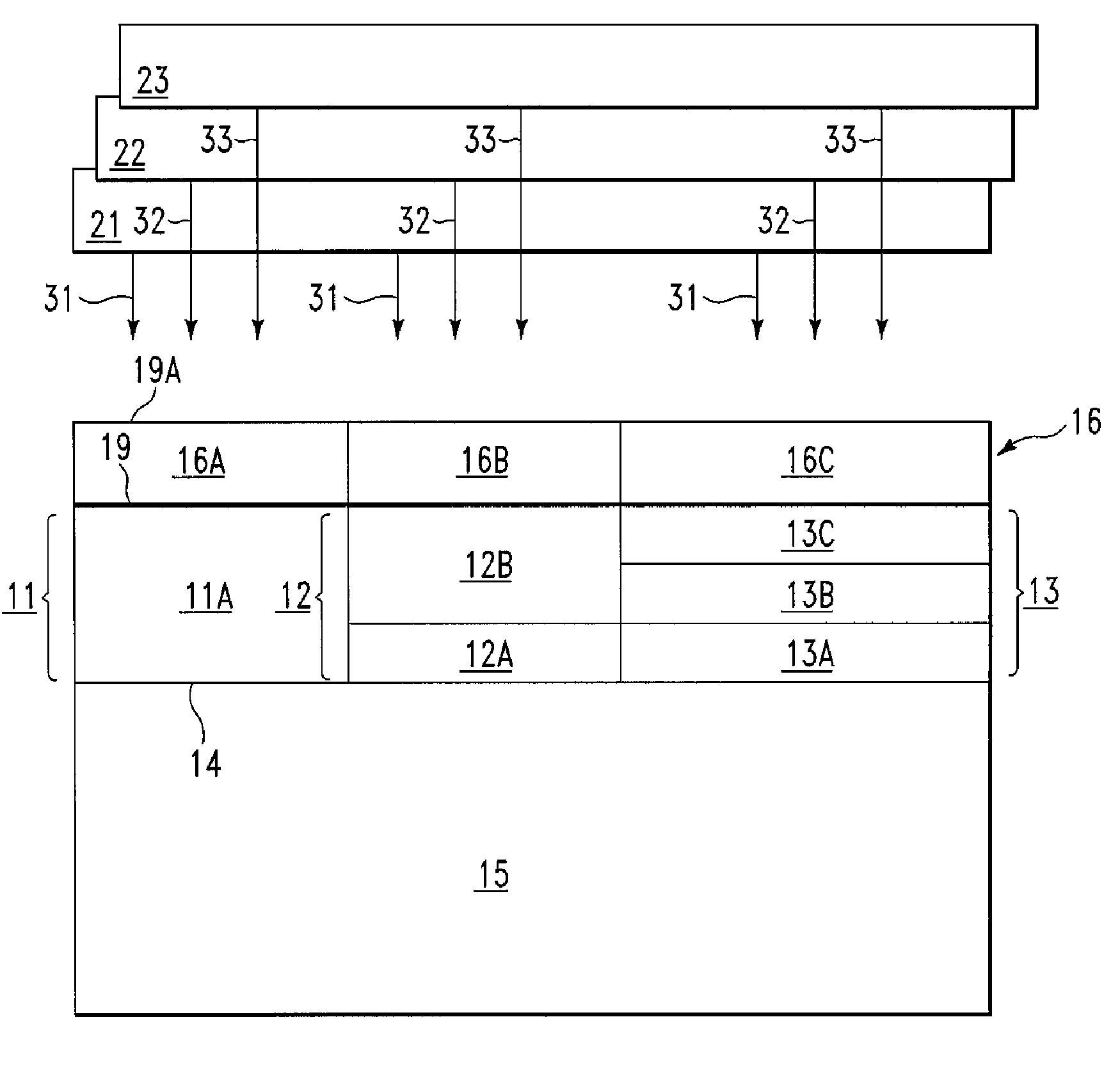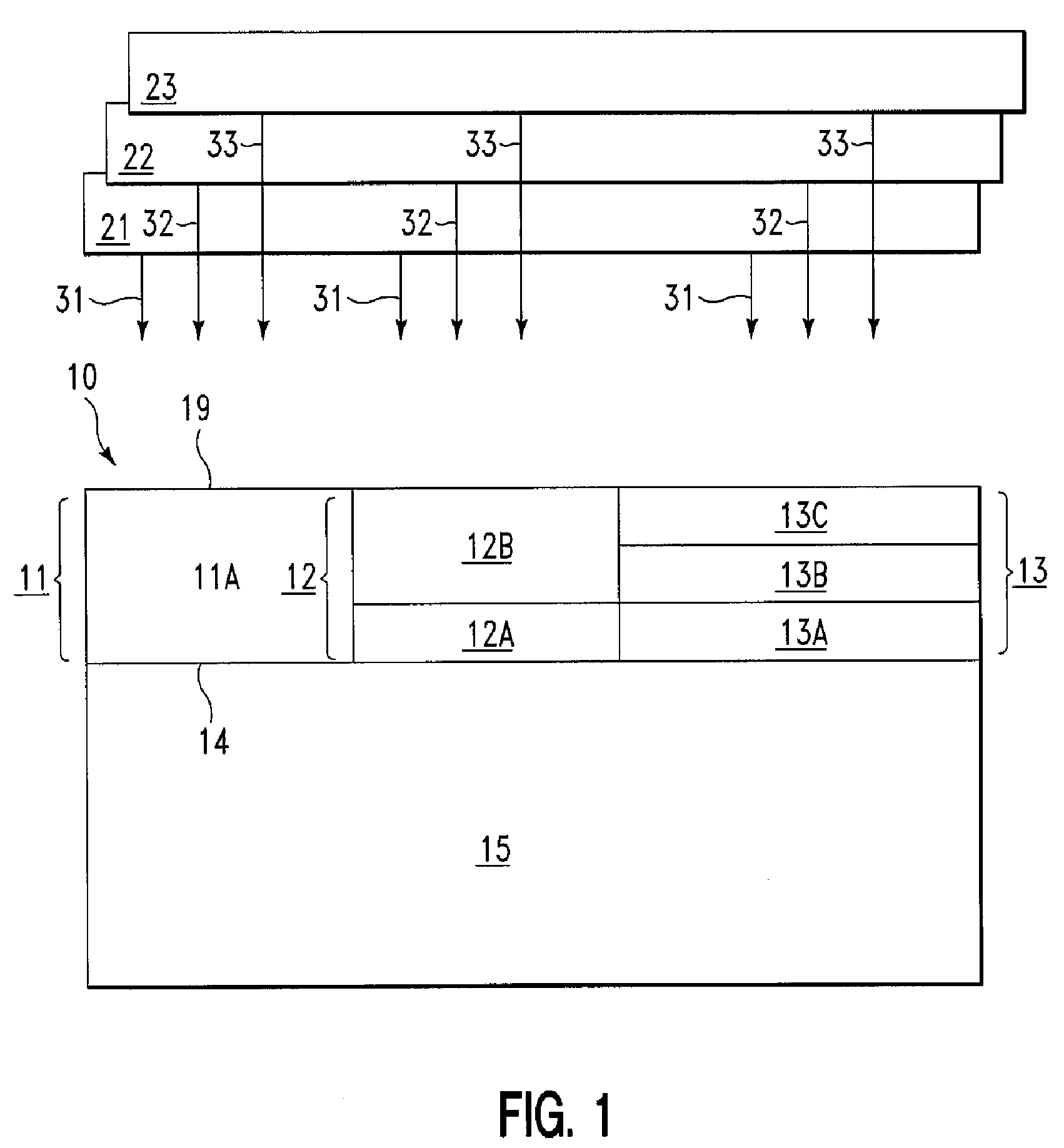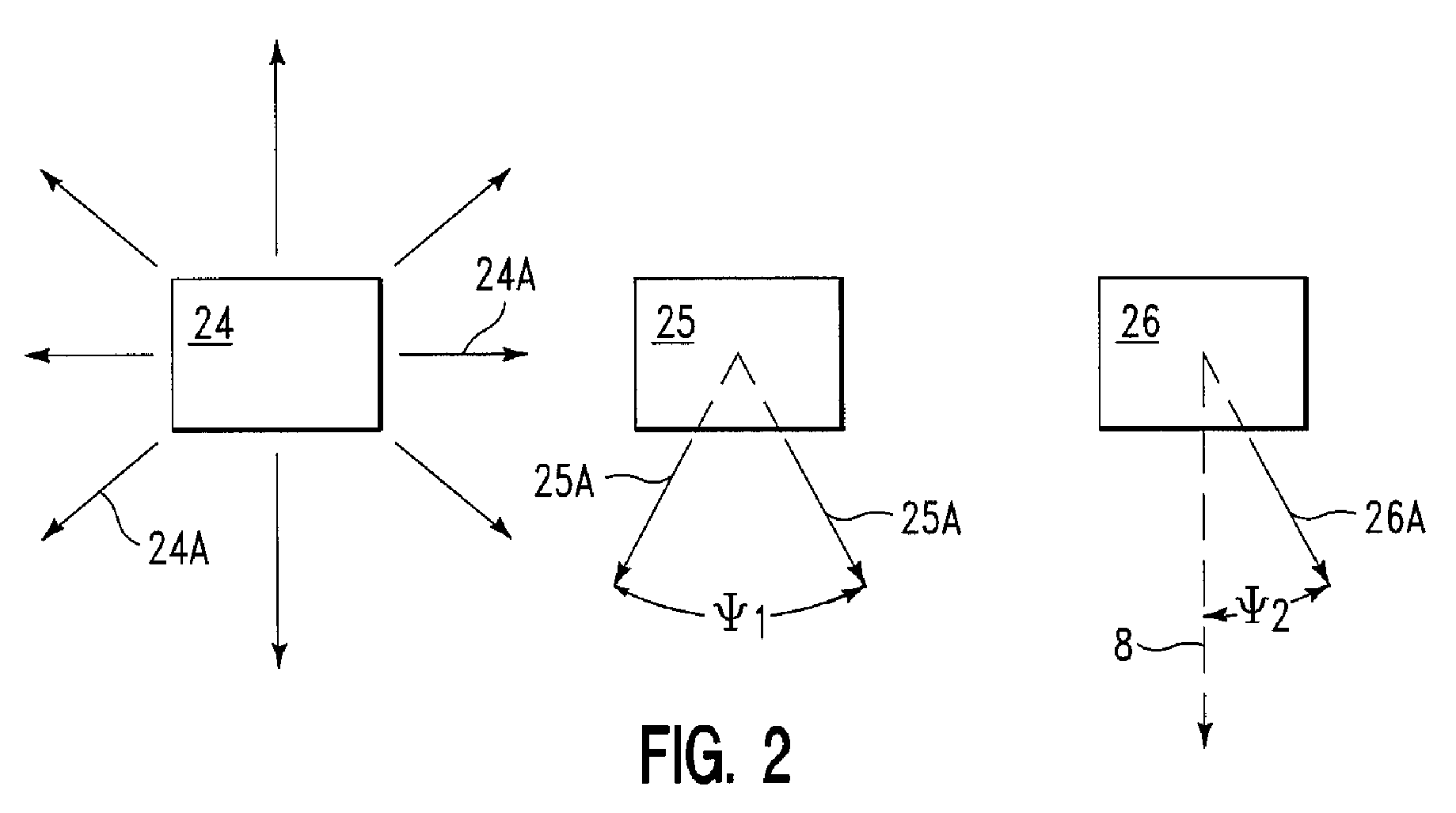Simultaneous irradiation of a substrate by multiple radiation sources
a radiation source and simultaneous irradiation technology, applied in the direction of polycrystalline material growth, crystal growth process, gel state, etc., can solve the problems of insufficient insufficient heating of wafer regions, and inability to achieve thermal equilibrium over length scales, so as to improve the spatial uniformity of thermal annealing of silicon wafers
- Summary
- Abstract
- Description
- Claims
- Application Information
AI Technical Summary
Benefits of technology
Problems solved by technology
Method used
Image
Examples
Embodiment Construction
1. Introduction
[0034]FIG. 1 depicts a front cross-sectional view of a substrate 10 with radiation sources 21, 22, and 23 adapted to irradiate the substrate 10 with electromagnetic radiation 31, 32, and 33, respectively, in accordance with embodiments of the present invention. The radiation 31, 32, and 33 is incident on the top surface 19 of the substrate 10. The substrate 10 comprises a base layer 15 and layered stacks 11, 12, and 13 on and in direct mechanical contact with the base layer 15. The base layer 15 may comprise comprises a dielectric material, a semiconductor material, a metal, an alloy, etc. For example, the base layer 15 may be a semiconductor layer (e.g., a semiconductor wafer) comprising a semiconductor material (e.g., single crystal silicon, polysilicon, germanium, etc.—doped or undoped). The substrate 10 may terminate with the base layer 15. Alternatively the base layer 15 may be disposed between the stacks 11-13 and one or more additional layers of the substrate.
[...
PUM
| Property | Measurement | Unit |
|---|---|---|
| power distribution | aaaaa | aaaaa |
| wavelength | aaaaa | aaaaa |
| incident energy flux | aaaaa | aaaaa |
Abstract
Description
Claims
Application Information
 Login to View More
Login to View More - R&D
- Intellectual Property
- Life Sciences
- Materials
- Tech Scout
- Unparalleled Data Quality
- Higher Quality Content
- 60% Fewer Hallucinations
Browse by: Latest US Patents, China's latest patents, Technical Efficacy Thesaurus, Application Domain, Technology Topic, Popular Technical Reports.
© 2025 PatSnap. All rights reserved.Legal|Privacy policy|Modern Slavery Act Transparency Statement|Sitemap|About US| Contact US: help@patsnap.com



